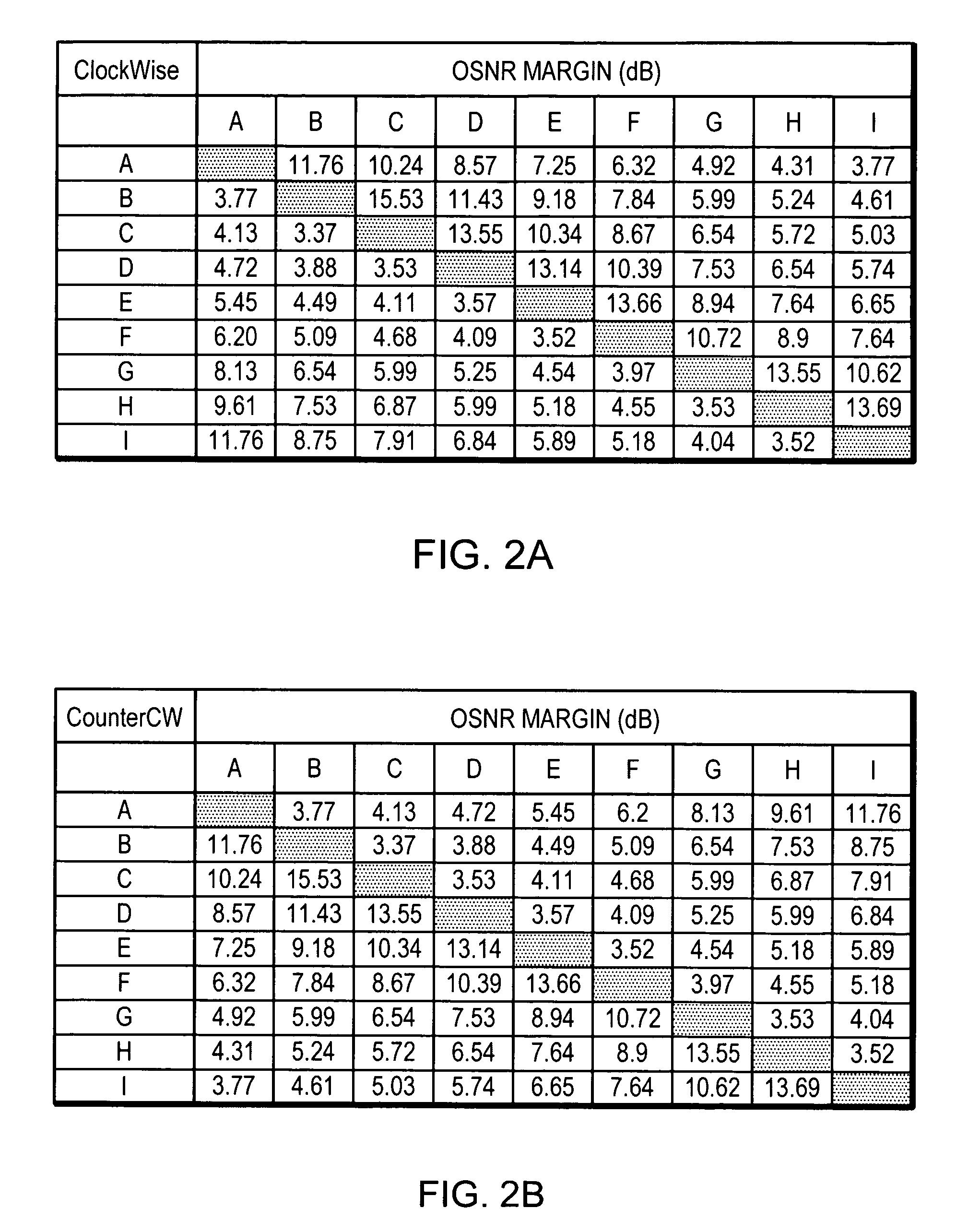Method and apparatus for reducing cost of an optical amplification in a network
- Summary
- Abstract
- Description
- Claims
- Application Information
AI Technical Summary
Benefits of technology
Problems solved by technology
Method used
Image
Examples
Embodiment Construction
[0019]A description of example embodiments of the invention follows.
[0020]Example embodiments of the present invention provide a method or apparatus for planning deployment of optical network elements (ONEs) in metropolitan wavelength-division multiplexing (WDM) networks.
[0021]FIG. 1 is a block diagram that illustrates an optical network 100 including a plurality of nodes 110a-l connected via a plurality of fiber optic links 115a-l. For example, node 115a connects to node 115b via a first fiber optic link 115a in a clockwise direction 102. In a counterclockwise direction 104, node 115a connects to node 115l via a second fiber optic link 115l. Typically, nodes include central offices, communications sites, communications devices, etc. The optical network 100 shown in FIG. 1 has a ring topology, whereas other optical networks may have other topologies including linear, mesh, unidirectional, bidirectional, or hybrid topologies. In addition, optical networks may have any number of nodes...
PUM
 Login to view more
Login to view more Abstract
Description
Claims
Application Information
 Login to view more
Login to view more - R&D Engineer
- R&D Manager
- IP Professional
- Industry Leading Data Capabilities
- Powerful AI technology
- Patent DNA Extraction
Browse by: Latest US Patents, China's latest patents, Technical Efficacy Thesaurus, Application Domain, Technology Topic.
© 2024 PatSnap. All rights reserved.Legal|Privacy policy|Modern Slavery Act Transparency Statement|Sitemap



